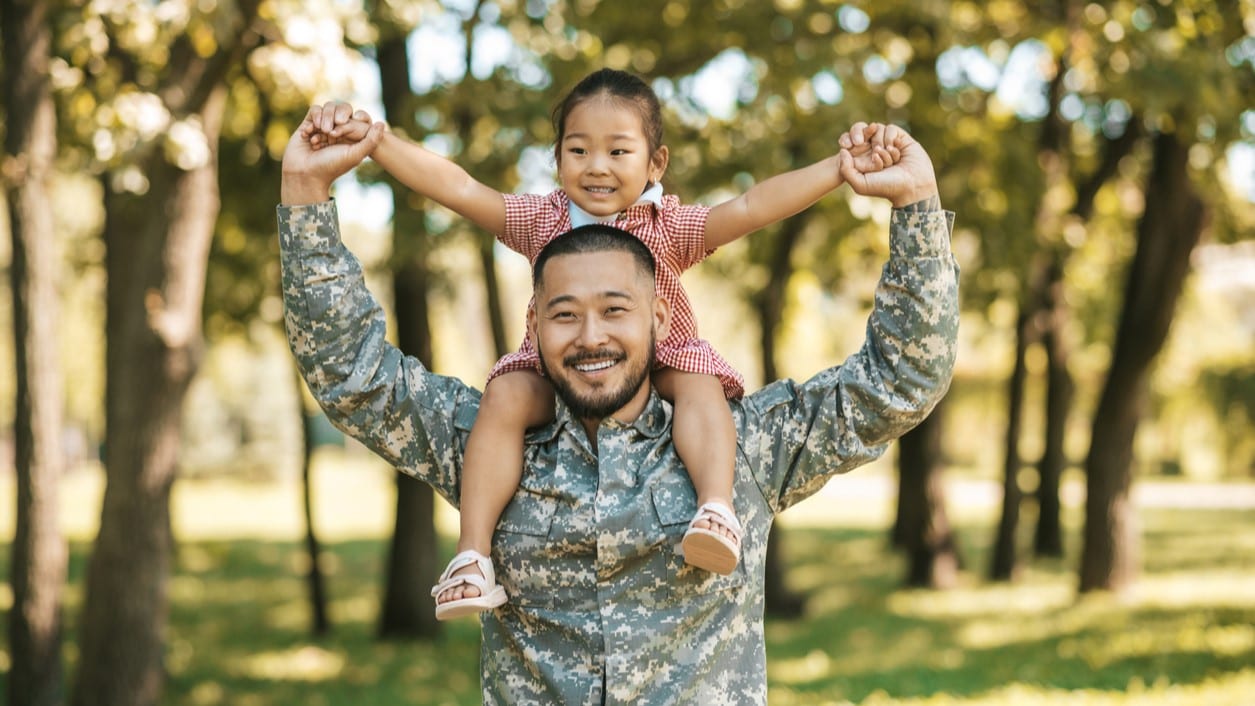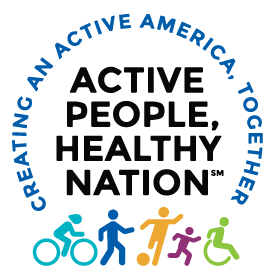Key points
- Physical inactivity impacts national security.
- Only 2 in 5 young adults are weight-eligible and physically prepared for basic training.
- Participating in physical activity can improve service members' mental and physical health.

Physical activity and national security
The nation's armed forces depend on men and women who are fit, healthy, and able to perform at their peak on or off the battlefield. However, only 2 in 5 young adults are weight-eligible and physically prepared for basic training. Compared to physically prepared candidates, recruits who are not physically prepared are less likely to complete basic training because of injuries and other fitness-related issues.
Physical activity offers many health benefits for everyone. Being physically active can also help military families cope with service members' training and deployments. Physical activity can also help veterans transition to civilian life.
What can be done

Military families may live on or near base. Reserve members live in communities throughout the country. Supportive community design on bases and in surrounding communities can help service members, military families, veterans, and Department of Defense civilians be physically active regularly.
The federal government is:
Providing tools and resources to encourage community and base design for physical activity. This includes connecting activity-friendly routes with sidewalks, bike lanes, and public transit to key destinations, such as housing, food outlets, and parks.
Improving total force fitness by connecting eight dimensions of fitness, including physical fitness, to optimize health, performance, and readiness holistically.
State and local officials can:
Increase awareness of existing community resources, programs, and partnerships. Existing resources may help address cost and accessibility challenges of increasing participation in physical activity programs.
Show support for creating activity-friendly communities. Download: Proclamation Template.
Transportation and community planning professionals can:
Collaborate with other sectors to design communities off base. Together, they can support a safe, comfortable, and accessible network of activity-friendly routes that connect to places people go regularly.
Work closely with multiple community leaders during the project planning and design process. This helps ensure that safety, access, and design decisions match local community needs. Involve base planners, local community planning and transportation leaders, service members, their families, veterans, and Department of Defense civilians. Participation in community workgroups is important to ensure military interests are represented.
Community organizations can:
Develop and promote community-based physical activity programs. For example, group classes and walking groups can increase social connectedness while increasing physical activity. Encourage service members, military families, and veterans to attend. Tailor activities as appropriate.
Frequently share the locations of parks, trails, greenways, and other places where people can be physically active.
Every sector can:
Encourage people, including those in the military, to meet physical activity guidelines. Recommend ways people can add more physical activity to their day. This can be outside the gym, such as gardening, taking a walk, running in a park, biking to the store, or doing household chores.
Promote the physical and mental health benefits of regular physical activity. This is especially important in settings or communities where people have trouble being physically active. It may also be especially important for service members and veterans who have anxiety or depression.
Resources
For military support staff
Chronic Diseases and Military Readiness
Illustrates how preventing and controlling chronic diseases is a matter of national security and how promoting more physical activity and better nutrition can help.
Building Healthy Military Communities: Recommendations From the Thought Leader Round Table Sessions
Recommendations to help state and county officials address challenges associated with people in the military as part of broader community change.
Building Healthy Military Communities Toolkit
Strategies for Department of Defense service providers and other community organizations to work with public health and related agencies to build healthy, physically active communities.
National Physical Activity Plan: Military Sector
Provides policy and programmatic recommendations to increase physical activity. It includes strategies and tactics that communities, organizations, and people in the military sector can use to support physically active lifestyles.
Unfit to Serve
Outlines the effects of obesity on U.S. military readiness. It also emphasizes the many health and performance benefits increased physical activity can offer to current and future service members.
For service members, families, reserve members, and veterans
Total Force Fitness—Physical Fitness
Explains why physical fitness is important as part of eight dimensions of fitness to optimize health, performance, and readiness. Total Force Fitness focuses holistically on a service member's entire health throughout their career.
Get active
Armed Services YMCA
Provides free or low-cost programs and services for service members, military children, spouses, and families.
Take Command of Your Well-Being With a Health and Wellness Coach
Offers free consultations for health and wellness coaching for active-duty service members, the National Guard, reserve members, and their immediate family and survivors.
MOVE! Weight Management Program
Provides healthy eating and physical activity tips supported by the Veterans Affairs' National Center for Health Promotion and Disease Prevention.
Move Your Way
Highlights tools, videos, and fact sheets with tips that make it easier to get a little more active.
Want more proven ways to increase physical activity?
Parks and greenspaces
Free Entrance to National Parks for Current Military, Veterans, and Gold Star Families
Explains how U.S. military veterans and Gold Star Families can receive free access to more than 2,000 federal recreation areas, including national parks, wildlife refuges, and forests.
Parks Near Department of Defense and Veterans Administration Facilities
Includes map of national parks close to Department of Defense or Veterans Administration facilities.

Want additional tips and resources to be active?
Learn about Active People, Healthy NationSM, CDC’s national initiative to help people be more physically active.
